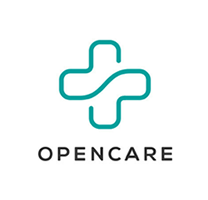We invested in 0x, a project designed to create a protocol for decentralized exchanges, because we believe financial disintermediation is the largest benefit from blockchain tech. If you can disintermediate centralized entities that seek unnecessary rents by replacing them with protocols operating at marginal cost, everything becomes more efficient. There’s no real good reason to pay a centralized exchange 0.25% every time you do a trade, and there’s definitely no reason to store your funds with them and hope that they don’t get hacked.
As blockchain tech scales more and more, people will start tokenizing more assets that users will be able to trade on it. As the definition of a financial asset broadens, people will need trading venues to trade them on. Instead of manually setting up a new market each time, with 0x people can programmatically create markets between pairs of various tokens.
Our cost basis was about a penny, so we're up 200x.
There hasn’t been a true zero to one improvement in the food industry since McDonalds in the 1950s.
There are two major cost centers that plague all QSRs: real estate and, and labor. It currently costs most QSRs $1-2 million to open a new location. Labor is invariably around 30% of their budget, with incredibly high turnover and high amounts of training thus required. Clearly the answer is automation, which would cut down labor costs and allow for a much smaller real-estate footprint, which in turn opens up a whole new set of prime locations to target. I’d expect to see, at some point, an automated equivalent of McDonalds, or Starbucks, and in the long term would expect small machines where you can request your favorite Bobby Flay or Gordon Ramsay meal cooked up for you on the spot.
Despite the obviousness of the solution, as well as the amazing teams and significant capital that’s been injected into the space, to our knowledge, nobody has really been able to get to the point where they have one unit up and running in the wild that truly proves out their unit economics. We believe that there are two main reasons for this. First, and most importantly, the majority of these companies are trying to use custom hardware, which is super expensive, takes a long time to develop and iterate on, and is incredibly difficult to scale, to the point where they can’t do so in a way where it economically makes sense to cut out human labor. Second, once this hurdle is closed, we’ve found that these technology-focused companies do not have a good grasp on retail — where’s the optimal location, branding, way to survey customers, etc.
Then we met Greg Becker. Greg understands retail: his father founded the incredibly successful QSR chain, Roti, which is chaired by his mentor, Mats Lederhausen, the former chairman of Chipotle who took them public. At Roti, he did everything from making buckets of hummus to going to every board meeting, where he participated in strategic planning at every level of the business.
During his time at Roti, Greg came across all the problems mentioned above, and came up with a novel approach. He realized that the price of off-the-shelf hardware, specifically robot arms, was dropping dramatically, to the point where he could write software to combine these parts into a full-functional automated restaurant with unprecedented unit economics. Greg and his team have a unit up and running at their lab in Berkeley, and plan to ship one into the wild in 2018.
Donec odio metus, gravida ut mi nec, sagittis vehicula metus. Quisque ut odio sed turpis porta vestibulum a sed mi. Vestibulum in leo quis urna pharetra pellentesque ut nec ipsum. Quisque ut ex enim. Donec id lorem velit. Vestibulum elit justo, commodo quis augue ac, commodo eleifend tortor. Curabitur rhoncus luctus leo eu ullamcorper. Nunc in mauris eu augue lobortis aliquam. Aenean faucibus non nisi et viverra. Etiam at urna neque. Morbi cursus ex ex, vel ullamcorper tortor pharetra ut. In in nisi eleifend, sodales felis at, pellentesque nulla. Aenean eget molestie odio.
Etiam at urna neque. Morbi cursus ex ex, vel ullamcorper tortor pharetra ut. In in nisi eleifend, sodales felis at, pellentesque nulla. Aenean eget molestie odio.
Seated helps restaurants address one of, if not biggest inefficiency in the restaurant space: filling excess capacity.
Restaurants are notoriously plagued with large fixed costs, mainly rent and labor, which together account for 60% of OpEx. Their variable costs, primarily food, are relatively low at 30%. Thus, restaurants are incentivized to fill as many seats as possible, as it increases their marginal profit as they can start to spread out those high fixed costs.
The problem is how to drive customers into those empty seats, especially outside of prime dining hours (7-9p).
Seated is the first company to truly solve this pain point for restaurants, who happily pay them 15-30x what they pay OpenTable per reservation. They’ve done this by providing restaurants with the tools to efficiently incentivize users to come in at certain times: they can offer rewards for users to come in off-peak hours, and can influence how much that user spends by setting a minimum spend to claim said reward. Most importantly, restaurants easily make tables available/unavailable based on time (i.e. during peak hours). To make this formula work, Seated has had to combine several counterintuitive insights learned over years of testing and observation.
Avatars will be everywhere in the future: on your phone, Hololens, in your VR headset, and even on the chip that will exist in the back of your brain. FaceRig’s goal is to define the standard for avatar-based communication, create the tools that enable developers to create for this standard, and to own the marketplace and distribution for all of the avatars created on every platform.
FaceRig’s technology enables artists to use their favorite software — be it 3d Studio Max, Maya, Blender, etc — to create Pixar quality 3D avatars instantly, at almost 0 cost. All the artist has to do is create to the FaceRig standard, which implements portions of the FACS system. The end goal is for FaceRig to become the GIPHY of Avatars.
Currently, one of the biggest drivers of traction on mobile messengers are 3d masks and stickers, content which costs hundreds of thousands of dollars to create, and then becomes irrelevant after a few weeks. With FaceRig, these messengers could open source content creation, save hundreds of thousands of dollars, and accumulate a superior content catalog that would drive traction. What differentiates FaceRig from most of the other AR plays out there is that it currently works on mobile, but the standard, tools, brand, and content generated can easily be imported to whatever VR/AR platforms gain adoption in the future, as the technology is platform agnostic.
Funfair is a decentralized casino built on top of Ethereum. It is one of the most obvious use cases for Ethereum, as gambling has historically been one of the first applications of new information technology.. Online casinos today charge pretty high rates, usually around 7-8%. Funfair is a platform that allows anyone to essentially spin-up their own online casino, with market-driven fees that are much lower. Another problem with these centralized sites today is that they can be shutdown, stack the odds in their favor in a manner that is not transparent, or flat out steal all your money. With Funfair, this is impossible because all the funds are stored in smart contracts, whose code is public.
The Funfair token is essentially akin to casino chips. Just like when you go to a casino and deposit cash and in exchange get chips. However, there is one major difference: Funfair won’t mint more chips. So if the demand for FUN increases, the price per FUN token should go up due to limited supply.
We invested in Paradex back when it was called Augment Partners, who originally intended to build a for-profit on top of Augur. Paradex built one of the first relayers or decentralized exchanges on top of 0x. Orders need to be matched between traders on 0x and relayers serve that role. They aggregate orders and process them in a fair, transparent, auditable fashion. Paradex ended up getting acquired by Coinbase in May, 2018.
At Datmo, they've built an end-to-end artificial intelligence platform that makes it simple and efficient for all developers to build AI models, which they can then sell to companies who can deploy, monitor, and iterate on these models to solve their business problems. Datmo’s Network of developers ensures that as AI improves with time, businesses can leverage it without having to redo their entire pipelines.
Flexa is one of the coolest products we’ve used in a long time. In a nutshell, it lets you use cryptocurrency to pay in retail stores such as Starbucks (where it’s live now!), and it actually works. In the background they’re seamlessly converting the crypto to dollars, and then using cash/loyalty card rails behind the scenes to pay the merchant. What’s cool about that is the merchant doesn’t have to do any integration, it just works out of the box. On the merchant side, this allows them to accept payments at a much cheaper rate than credit cards, since chargebacks are impossible. This materially increases their margins. In the future, these merchants will hypothetically be able to offer their customer bases discounts of several percentage points to pay in crypto. Flexa is issuing a security token where they’ll distribute profits from the processing fees.
Opencare is building the largest network of dentists, which customers can easily book wherever they are, whatever their needs may be. Having already serviced over 120,000 patients, Opencare is live in Seattle, San Francisco, San Jose, San Diego, Chicago, Washington, Denver, Austin, Toronto, Vancouver, Calgary, and Ottawa.
Imagine a business with the income statement of a popular retail business with the operating costs of a vending machine. We found one.
To our knowledge, it is the first company in the food-automation space with fully-operational machines in the wild that have demonstrated unit economics that truly justify cutting out human labor. Despite dozens of other companies in this space, some with hundreds-of-millions in funding, nobody else has reached this milestone.
Frobot is a completely automated Frozen yogurt store. At around 60% EBITDA margins, they could be the most profitable QSR (Quick Service Restaurant) ever. For context, a high-performing McDonalds or Starbucks struggles to hit 20% EBITDA.
In a world where smart cars and fleets are the present, and self-driving cars are obviously the future, data and efficiency are everything. Most new cars allow you to track almost everything from the dashboard {fuel, oil levels, brake pad wear, wash fluid level, engine temp, battery levels, etc}, and self-driving cars use data from all of these sources as inputs into their navigation systems. Despite this progress, there is still one gaping hole: tires.
Intellitire has built a cheap, robust sensor (the one found in cell phones) mounted inside the tire and paired that up with their machine learning cloud platform to deliver insights to vehicle operators in real time, whether they are a human, a fleet operator, or a computer. This technology will increase safety and tire life for all vehicles, and will provide invaluable data to self-driving cars and the world of insurance.







































